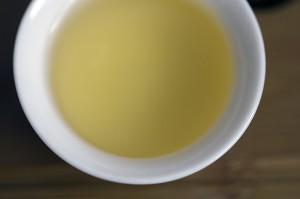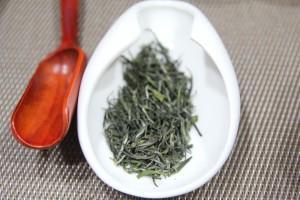One of the most commonly misunderstood aspects of tea is the caffeine content of tea. To cut to the chase and answer one of the most frequent questions on this topic- the answer is all teas, as in ‘true’ teas from the Camellia sinensis plant contain caffeine.
The next most common question is which type of tea contains the least or most caffeine.
There are no easy answers to this question. Also unless you are eating the raw leaf, the question that you actually want to ask is which type of brewed tea contains the least or most caffeine.
There are 3 main components that would affect the answer-
i) The amount of caffeine in the raw leaf
ii) The amount of caffeine in the processed leaf
iii) The amount of caffeine dissolved in the final tea liquid
The Amount of Caffeine in the Raw Leaf
This is actually dependent on a number of factors but one helpful guide is to understand the role of caffeine in the tea plant.
Caffeine is actually a natural pesticide- in leaves it paralyzes and even kills many types of predator insects.
Hence when you consider when or where pests tends to be most rampant, you can understand there the caffeine content of the raw leaves will be the highest.
Maturity of leaves
All else being equal, the younger the plant, the more tender it is and the more caffeine it contains to shield itself from the plant.

Some common types of tea according to the pluck position are:
Buds- Silver Needles, fine pre-Qing Ming Jiangnan green teas especially Bi Luo Chun, certain types of Chinese black teas such as Jin Jun Mei, bud teas
Bud to 1 leaf- Higher grade (but non pre-Qing Ming) green teas, White Peony
Bud to 2 leaves- common grade green teas, oolong tea, Liu An Gua Pian, most black teas
3 leaves- oolong teas and Pu-er
4 leaves- Pu-er
Harvest Season
One often neglected factor in the content of caffeine is the harvest seasons.
As pests come out in fuller force during summer and autumn, tea leaves harvested during this period tend to be higher in caffeine to repel the predators as compared to leaves harvested in the spring.
By the same token, tea leaves harvested in spring- again with the caveat of all else being equal- tend to be lower in pesticides compared to summer and autumn teas.
Plant Species
The 2 main types of tea sub-species are Camellia sinensis v sinensis which is common in eastern and northern China (as well as most former British colonies since the source is all from Fujian) and Camellis sinensis v assamica which although is named after Assam (where Robert Bruce first discovered it) is discovered to be native to Yunnan.
Typically plants from the assamica family tend to be higher in caffeine compared to the sinensis family. That means for example all else being equal a Yunnan Black would be higher in caffeine to a Qimen Black.
Geographical Location
Interestingly enough, in my research I came across this line that teas in the south tend to be higher in caffeine content than teas in the north again with that pesky caveat of all else being equal.
The book doesn’t elaborate further but my inference is that southern China tends to have a more tropical climate, higher in heat and humidity which proves to be a hotbed for pests which would then influence the caffeine content needed to repel them.
Method of Processing

The method of processing has the greatest impact on the caffeine content in the form of heat. Caffeine melts at 235⁰C -238⁰C. Technically, caffeine free tea can be made by heating to that temperature, probably tastes burned and economically unviable to produce but technically possible.
However caffeine sublimates at temperatures of 120⁰C and volatilizes at temperatures of 180⁰C. Hence, teas that undergo a stage of processing that involve heating above 120⁰C (generally shaqing, wok-roasted or high fired baking) will reduce the caffeine content. These include certain types of green teas, oolong teas and yellow teas.
White and black teas though do not undergo heat of above 80⁰C and all else being equal tend to be higher in caffeine content.
Unfortunately it is not possible for this post to cover the scope of how individual types of teas are processed and how it affects the caffeine content but a basic understanding of how teas are processed will point us in the right direction.
Infusion methods
Again, no one consumes tea by eating dry leaves- at least not typically. Ultimately how much caffeine we consume depends on the amount that is dissolved in our brewing vessel.
This is dependent on 4 factors-

ii) Quantity of leaves used- this should be fairly intuitive
iii) Infusion time- How long the leaves are infused affects how much it is dissolved
iv) The number of infusion- each infusion partially dissolved caffeine and later infusions will be lower in caffeine content
Hence there are no quick answers to the caffeine content in any particularly type of tea but doesn’t this give you even more incentive to dig deeper into the world of tea?
For further reading- please refer to these 2 books where most of the information was sourced
i) Cha Yu Jian Kang by Tu You Ying (Shijie Chubanse)
ii) Cha Yi Xue Yan Jiu by Zhu Yong Xing and Wang Yue Fei (Zhejiang Daxue Chubanse)
See here for more articles related to tea and health
